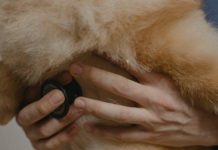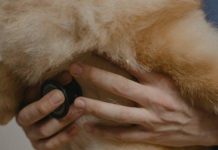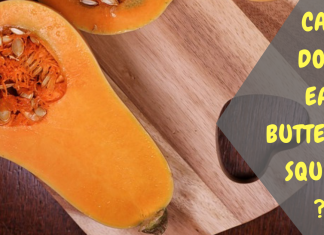Welcoming a puppy into your home is an exciting journey filled with joy, love, and the occasional challenge. As a new pet parent, one of your primary responsibilities is ensuring the health and well-being of your furry friend. Among the various aspects of puppy care, maintaining healthy skin is crucial, as young dogs are particularly susceptible to a range of common skin issues. In this guide, we’ll explore practical and effective strategies to prevent these skin problems, helping you keep your puppy comfortable and thriving. Whether you’re a first-time owner or an experienced dog lover, these insights will empower you to provide the best possible care for your puppy’s skin, ensuring a happy and healthy start to their life with you.
Understanding Your Puppys Skin Needs
As a new puppy parent, understanding your furry friend’s skin needs is crucial for maintaining their overall health and happiness. Puppies have delicate skin that is still developing, making them more susceptible to a variety of skin issues. To keep your puppy’s skin healthy, it’s important to consider several key factors:
- Diet: A balanced diet rich in essential nutrients and omega fatty acids can help maintain your puppy’s skin health. Look for puppy foods that include ingredients like fish oil or flaxseed.
- Bathing Routine: Over-bathing can strip your puppy’s skin of natural oils, leading to dryness and irritation. Use a mild, puppy-specific shampoo and bathe them only when necessary.
- Grooming: Regular grooming helps to remove dirt, allergens, and loose hair, which can prevent skin problems. Brush your puppy’s coat according to their breed’s needs.
- Environment: Be mindful of environmental factors such as humidity, pollen, and dust, which can affect your puppy’s skin. Consider using air purifiers and keeping your home clean to minimize allergens.
- Parasite Control: Protect your puppy from fleas and ticks, which can cause itching and skin infections. Consult your vet for appropriate preventative treatments.
By being attentive to these aspects, you can help ensure your puppy grows up with healthy, resilient skin. Always consult your veterinarian if you notice persistent skin issues, as they can provide personalized advice and treatment options.

Creating a Nourishing Diet for Healthy Skin
Providing your puppy with a balanced and nutritious diet is crucial for maintaining healthy skin. Begin by incorporating high-quality proteins, as they are the building blocks for skin repair and growth. Look for foods that list meat, fish, or poultry as the first ingredient, ensuring your furry friend receives the essential amino acids they need. Omega-3 and Omega-6 fatty acids are also vital, as they help reduce inflammation and promote a glossy coat. You can find these in fish oil supplements or foods enriched with flaxseed or salmon oil.
- Include antioxidant-rich foods like blueberries, sweet potatoes, and spinach to combat oxidative stress.
- Probiotics and prebiotics can support gut health, indirectly benefiting the skin by improving nutrient absorption.
- Ensure your puppy stays hydrated with constant access to fresh, clean water.
- Consider foods fortified with vitamins E and C, known for their skin-protective properties.
Remember, a sudden change in diet can upset your puppy’s digestive system. Gradually introduce new foods over a week, monitoring for any adverse reactions. By focusing on these dietary essentials, you can help your puppy develop resilient, healthy skin, setting the foundation for a lifetime of wellness.

Establishing a Gentle Grooming Routine
Creating a nurturing grooming experience for your puppy is all about establishing a routine that feels more like a pampering session than a chore. Start by choosing the right tools: a soft-bristle brush, puppy-safe shampoo, and a gentle towel are essential. Introduce these items gradually, allowing your puppy to sniff and explore them, building a sense of familiarity. Consistency is key; groom your puppy at the same time and place to build comfort and routine. Turn grooming into a bonding activity by incorporating lots of praise and treats, making it a positive experience.
- Use a soft-bristle brush to avoid irritating sensitive skin.
- Ensure the water temperature is lukewarm during baths to prevent discomfort.
- Pat dry with a gentle towel, avoiding vigorous rubbing.
- Regular check-ups for fleas and ticks can prevent infestations.
- Incorporate playful breaks to keep the experience light-hearted.
By turning grooming into a delightful ritual, you not only prevent skin issues but also nurture a trusting relationship with your puppy. Over time, this routine will become a cherished part of your pup’s day, promoting both health and happiness.

Recognizing Early Signs of Skin Problems
To ensure your puppy’s skin remains healthy, it’s essential to be vigilant about potential issues. Watch for unusual signs such as redness, swelling, or rashes. Puppies may also exhibit excessive scratching or licking of specific areas, which can indicate discomfort. Changes in fur texture—like dullness or unexpected hair loss—can also be early indicators of skin trouble. By being observant, you can address these concerns promptly and seek veterinary advice if necessary.
Consider keeping an eye out for the following symptoms that could signal skin problems in your furry friend:
- Flakiness or dandruff: Often a sign of dry skin or an underlying condition.
- Hot spots: These are inflamed, moist patches of skin that can be quite painful.
- Bumps or lumps: While not always serious, they should be monitored for changes.
Early detection is key, so maintaining a regular grooming routine and conducting frequent checks can help prevent common skin issues from developing into more severe problems.
















